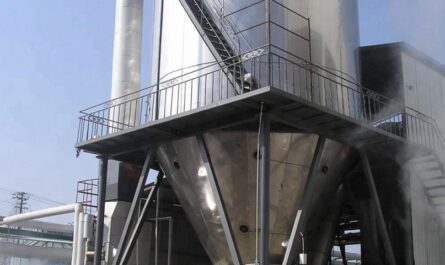Electric motors have become ubiquitous in today’s world, powering everything from household appliances to industrial machinery. Rarely do we stop to think about the inner workings of these machines or appreciate their importance. Yet electric motors form the backbone of our modern industrialized society, quietly powering devices all around us.
The Evolution of Electric Motors
The concept of an electric motor can be traced back to early experiments in electromagnetism in the 1820s. Scientists such as Michael Faraday discovered that they could produce torque by placing a magnet within a coil of wire carrying an electric current. This laid the foundation for electric motors. However, it was not until the 1880s that innovations allowed for the practical use of electric motors in industry.
In 1887, German engineer Nikolaus Otto invented the commutator, which allowed alternating current to be converted into rotating motion. This important development enabled the first practical AC motors to be built. Around the same time, Serbian-American engineer Nikola Tesla began experimenting with inductors and polyphase systems, paving the way for efficient induction motors. Throughout the early 20th century, improvements to materials and control systems made electric motors smaller, more powerful, efficient, and affordable. Today, modern electric motors achieve up to 95% efficiency.
Types of Electric Motors
There are several main categories of Electric Motors commonly used today:
– Direct current (DC) motors – Rotated by an electric current that flows through the motor. Commonly used in applications that require variable speed control such as fans and disk drives.
– Alternating current (AC) motors – Rotated by a magnetic field that alternates direction from the alternating electric power supply. Includes induction motors and synchronous motors.
– Stepper motors – Rotate in discrete increments when electrical pulses are applied. Widely used in CD/DVD drives and printers due to their precise control.
– Brushless DC motors – Similar to DC motors but without brush contact. More efficient and longer lasting than brushed DC motors. Found in computer cooling fans and factory robots.
– Synchronous motors – Rotation synchronizes exactly with the AC power supply’s frequency. Used in industrial applications like gas pipelines that require constant speed.
How Electric Motors Work
At their core, all electric motors operate based on the same principle – the interaction of magnetic fields and electric current to generate a rotational force, or torque. Here is a brief overview of the basic process:
1. A coil of wire wrapped around an armature is energized when electricity passes through it. This creates a magnetic field in the coil.
2. The coil is placed in a stationary magnetic field, usually created by permanent magnets.
3. According to the left-hand rule, the interaction between these magnetic fields causes a rotational force on the coil.
4. As the coil rotates, the motor’s commutator directs the changing electric current to maintain rotation in one direction.
5. The rotating coil is connected to an output shaft to transfer the rotational force/torque for performing work.
Applications of Electric Motors
Due to their compact size, reliability and convertibility between electrical and mechanical power, electric motors have countless applications in industries and technologies across the modern world:
– Appliances – Motors power blenders, washing machines, refrigerators, vacuums, and most other small appliances.
– Vehicles – Electric cars and hybrid vehicles use powerful electric traction motors. Gasoline engines also employ several electric motors.
– Machinery – Motors are essential to industrial production, driving machines in factories, mills and more. Common uses include robotic arms, conveyor belts and drilling equipment.
– HVAC – Heating, ventilation and air conditioning systems rely on motors to drive fans and compressors.
– Home Improvement – Tools like drills, saws and sanders require electric motors. Lifts, garage doors and pools also use motors.
– Healthcare – Various medical devices like MRI machines, X-rays and prosthetics employ electric motors in critical applications.
– Robotics – Continued advancements in robotics are driven by innovations in electric motor size, power and control capabilities.
The Future of Electric Motors
With electric motors playing such a central role across industries and technologies, advancements in motor design remain an area of active research and development. Some promising future directions include:
– More efficient permanent magnet motors using rare earth elements could power electric vehicles farther.
– Small, lightweight reluctance motors for highly miniaturized robotics and medical applications.
– Integrated motor-drive units combining motor and control electronics into a single package could simplify hybrid vehicle designs.
– Advances in silicon carbide power semiconductors enabling more compact and powerful inverter drives for industrial motor systems.
– Wide-bandgap semiconductor research may lead to even more efficient power switching and faster electric motor responses.
Electric motors exemplify how electrical and magnetic principles can be harnessed to automate tasks and power the technologies of modern civilization. Their high efficiency, reliability and broad applicability have made electric motors the unsung backbone of industry and infrastructure worldwide. Continued innovation promises even more widespread and impactful motor-driven technologies in the future.
*Note:
1. Source: Coherent Market Insights, Public sources, Desk research
2. We have leveraged AI tools to mine information and compile it


